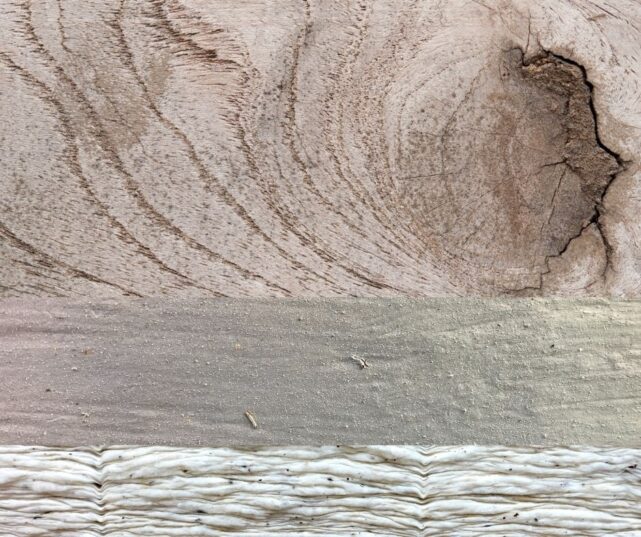Bio-based or recycled materials
Published on 9 May 2022
Published on 9 May 2022


It is a material made up of renewable natural plant- or animal-based products. Today several sources frequently go into the composition of construction materials used in France, including wood, hemp and flax, which is particularly used in insulation, and straw, cellulose wadding from paper, recycled cotton, etc.
Besides of these, there are ranges featuring recycled products.
The bio-based or recycled portion varies a lot from one product to another. Obviously the aim is to find the most “virtuous” materials possible, in terms not just of their composition but also their place of manufacture or recycling.
Using this type of material is becoming one of the criteria for gaining certain certifications, such as the HQE, E+C- and BBCA labels.
These materials also help to meet new European standards aimed at reducing the building sector’s carbon footprint (RE2020).
It was BEG Ingénierie who first suggested this topic to me: they asked me to look into what it was possible to do today and apply it directly to construction. I was immediately keen on working on this topic, which is so important these days for tackling the dwindling of resources. I managed to talk with an array of operators, such as manufacturers obviously but also technical inspection offices, who are really locked into supporting project managers on this matter. The objective was to confirm the use of these materials in ERP by BEG projects covering service sector, logistical or industrial buildings.
We quickly decided to narrow the scope of research to finishing work materials sourced from the Centre Val de Loire and Ile de France regions. The logic was to stay as close as possible to the projects: transport is a big factor in the compatibility of bio-based materials. The aim is to lower the carbon footprint by as much as possible.
Another constraint was the need to find certified materials that can be used in buildings intended to receive public visitors.
On top of that, the manufacturers that I surveyed had to be capable of supplying these materials right now and in big quantities. In this market, innovative new materials regularly come on-steam thanks to the amount of R&D. But the certification steps are long and there is no guarantee of getting sufficient approval. So where the supply was not developed enough, I widened my research to include other parts of Europe, namely Germany and Italy.
Lastly, I looked at the end of life of these materials and the recycling options.
All these criteria have to be considered in a product’s life cycle.
The Centre Val de Loire region has an agricultural and forestry potential and has driven eco-responsible construction projects for several years, notably thanks to players such as Karibati or the DREAL (France’s Regional Department of the Environment, Planning and Housing).
There are some very interesting things that can be used in a range of product categories.
For partitions, there are now panels or boards made with wood using forestry waste, paper yarn or gypsum. With regard to wood, the proportion of natural products is now reaching around 95 to 96% depending on the glue used. So this is a product well suited to the new eco-design standards while having the necessary heat and sound insulation properties and, in some cases, even being more effective than conventional materials.
As for floors, flexible covering tends to be made mainly with recycled material: carpets are made using fishing nets or old carpets. You can now get carpets made up of more than 23% plant material, consisting of castor seed and plant resin.
Linoleum is an interesting product made, to the tune of about 75%, from wood flour, flax oil and mineral filler.
Insulation, coating and painting materials are made using plant-based products and resins. These products are also more healthy – for example, the coatings release less pollutants into the air.
It is worth mentioning that my study did not address carrier materials: yet they include innovative materials such as green concrete. These could be covered in a future study.
At present the prices of bio-based materials are higher than for conventional materials. But more and more manufacturers who historically have used materials considered to be non-renewable are choosing to alter their recipes and use recycled raw materials. Alongside this, an increasing number of project managers are aware that resources are becoming more scarce and they are committing to more environmentally-friendly approaches at all levels.